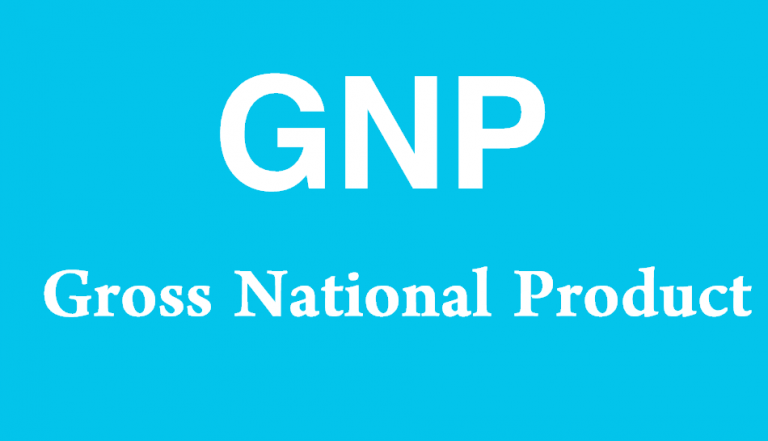When sourcing products from suppliers, particularly overseas, product samples play an essential role in verifying the quality, design, and reliability of the items before placing large orders. This process is crucial when sourcing from suppliers in China, as it provides an opportunity to confirm that the manufacturer can meet your specifications and that the products will meet your business’s standards. Product samples act as a physical representation of the quality and capabilities of a supplier, serving as one of the most effective methods of reducing risk in the procurement process.
The Importance of Product Samples in Supplier Verification
Product samples allow buyers to physically inspect and test a supplier’s products before committing to a large purchase order. This step is particularly significant when dealing with suppliers in foreign markets, such as China, where you may not be able to assess the products in person until after the shipment arrives. Samples provide a tangible way to assess the supplier’s production capabilities, quality, and adherence to your specific requirements.
Verifying Product Quality
One of the primary reasons for requesting product samples is to verify that the supplier can meet the required quality standards. This is especially important when sourcing from new suppliers or entering new markets, as there is a risk that the actual products may not meet the agreed-upon specifications.
- Material Quality: Product samples allow you to examine the materials used in the product, ensuring that they align with your standards.
- Construction and Workmanship: You can assess how well the product is manufactured, including its durability, finishes, and overall appearance.
- Consistency and Reliability: By examining samples, you can determine whether the supplier has the ability to produce consistent products in terms of quality and design.
Validating Supplier Capabilities
Product samples also help validate a supplier’s production capabilities. Even if a supplier claims they can manufacture a product to certain specifications, the sample allows you to confirm that they have the necessary resources, expertise, and processes in place to deliver on their promises.
- Manufacturing Process: Samples can reveal whether the supplier has the right equipment, technology, and processes to manufacture the product at scale.
- Customization and Flexibility: If you need customized features or designs, the sample allows you to evaluate whether the supplier can meet your customization requirements.
- Lead Time and Delivery: Samples can give you insight into the supplier’s lead times, helping you assess whether they can meet your delivery expectations.
Assessing Compliance and Regulations
For many products, compliance with local or international regulations is a critical consideration. Product samples can be used to verify that the supplier is adhering to industry standards, certifications, and legal requirements. In sectors such as electronics, medical devices, and food products, compliance is non-negotiable.
- Certifications: Product samples can be inspected for compliance with certifications such as CE, RoHS, or ISO, ensuring the product meets necessary safety, environmental, or industry standards.
- Testing for Compliance: Certain industries require specific product testing, such as electrical safety tests for electronics or health and safety checks for food products. By testing samples, you can ensure that the supplier is complying with the required regulations.
How to Effectively Use Product Samples to Verify Suppliers
Requesting product samples is a critical step in supplier verification, but the process must be managed effectively to achieve the desired results. Below are the steps you can follow to ensure that product samples serve their full purpose in verifying the reliability and capabilities of your supplier.
Establish Clear Expectations with the Supplier
Before requesting a product sample, it’s important to establish clear expectations with your supplier. This involves detailing the specifications, quality standards, and customization requirements for the product. Providing the supplier with a detailed product brief ensures that the sample matches your needs and helps avoid misunderstandings during the verification process.
- Detailed Specifications: Provide the supplier with a comprehensive product specification sheet that includes dimensions, materials, features, and quality standards.
- Quality Control Requirements: Clearly communicate your expectations for product quality, including tolerances, finishes, and performance characteristics.
- Customization Details: If you require customized designs or features, provide sketches, CAD drawings, or other clear documentation that outlines your design requirements.
By setting clear and detailed expectations from the beginning, you ensure that the sample is aligned with your needs and that the supplier understands your requirements.
Request Multiple Samples
When verifying a supplier, it’s often beneficial to request more than one sample. This can help you evaluate the consistency and quality control of the supplier’s production process. For example, if you request a batch of products, you can compare samples from different units to check for uniformity and assess whether the supplier’s manufacturing process can deliver consistent results.
- Multiple Samples for Comparison: Request several samples to test for quality consistency and to compare various units. This will help ensure that the supplier can deliver products that are uniform and reliable.
- Check Different Batches: If the supplier offers to produce the sample from a new batch, consider requesting samples from different production runs to verify whether consistency is maintained over time.
Analyze Samples Thoroughly
Once the samples arrive, it’s time to carefully analyze them. This process goes beyond a simple visual inspection and involves testing the product under real-world conditions to ensure it meets your performance requirements.
- Inspect the Physical Features: Examine the product for any visible defects or discrepancies in design, including issues with size, color, weight, or texture.
- Test the Product’s Functionality: If the product is functional (e.g., electronics or machinery), test its performance to ensure it meets your specifications.
- Assess Durability: Depending on the product, perform stress tests to assess its durability and long-term performance. For example, check how well an item handles pressure, temperature, or wear and tear.
Using a comprehensive checklist to evaluate the sample against your product requirements is a good approach. This helps you systematically assess every aspect of the product and ensures that you don’t overlook any critical features.
Communicate Feedback and Negotiate Changes
After thoroughly analyzing the sample, communicate your feedback to the supplier. If there are areas where the sample does not meet your expectations or specifications, provide constructive feedback and ask the supplier for revisions. This step is essential for ensuring that the supplier is capable of making any necessary adjustments before you place a larger order.
- Detailed Feedback: Provide specific feedback about any issues or concerns you encountered with the sample, whether related to design, functionality, or quality.
- Request Adjustments: If necessary, ask the supplier to make revisions to the sample and clarify whether they are willing and able to adjust their production process to meet your requirements.
Be clear about your expectations for improvement and give the supplier a reasonable timeline to make adjustments. Depending on the complexity of the changes, it may take a few iterations before the sample meets your standards.
Best Practices for Managing Product Sample Requests
Effectively managing the product sample request process requires clear communication, efficient handling, and a keen eye for detail. Implementing best practices can streamline the process and help ensure that you receive samples that accurately reflect the supplier’s capabilities.
Set a Budget and Manage Costs
While product samples are essential for supplier verification, it’s important to manage the costs associated with them. Requesting multiple samples from different suppliers can quickly become expensive, especially if you are importing from overseas. Consider setting a budget for sample costs and prioritize requests based on suppliers with the highest potential.
- Negotiate Sample Fees: Some suppliers charge for samples, while others offer them for free or at a discounted rate. Negotiate with your supplier to minimize these costs if possible.
- Prioritize Key Suppliers: Focus on requesting samples from the suppliers who are most likely to meet your needs. This will reduce the number of samples you need to request and help manage costs.
Keep Clear Records of Samples
As you work with multiple suppliers and request several product samples, it’s essential to keep clear records of all samples received, including the supplier’s information, product specifications, and any feedback or revisions requested.
- Maintain a Sample Database: Keep a log or spreadsheet that tracks each sample, the date it was received, its evaluation results, and the status of any requested changes.
- Document Communication: Save all communications with suppliers regarding samples, including emails, invoices, and feedback. This documentation can serve as a reference if any issues arise later in the process.
Conduct a Comparative Evaluation
If you are working with multiple suppliers, it’s beneficial to compare the samples you receive from each one. A comparative evaluation helps you assess the strengths and weaknesses of each supplier and determine which one is best suited to meet your needs.
- Side-by-Side Comparison: Lay out the samples from different suppliers and compare their features, quality, and design.
- Score Each Supplier: Create a scoring system to evaluate the samples based on key criteria such as product quality, delivery time, customer service, and price. This will provide a more objective way to compare suppliers.
Follow Up on Sample Revisions
If you request revisions to the product sample, be sure to follow up with the supplier to ensure that the changes have been made according to your specifications. This follow-up helps ensure that the supplier is responsive and capable of making necessary adjustments before proceeding with a larger order.
- Review Revised Samples: Once the supplier has made changes to the product sample, carefully review it to ensure that all requested adjustments have been made.
- Establish a Timeline for Changes: Set clear expectations regarding the timeline for revisions and request updates from the supplier as needed.
The Role of Product Samples in Long-Term Supplier Relationships
Product samples not only help with supplier verification but also play a role in building long-term relationships with suppliers. By maintaining open communication and regularly testing product samples, you can establish a productive working relationship that ensures continued quality and consistency.
Establishing Trust with the Supplier
Working closely with your supplier during the product sample process helps establish mutual trust. By providing clear feedback and maintaining an open line of communication, you demonstrate that you value quality and reliability, which encourages the supplier to uphold these standards.
Ongoing Quality Control
Even after the initial sample verification, it’s essential to continuously monitor product quality as your order volume increases. Requesting periodic samples throughout the production process or before shipping ensures that the quality remains consistent over time.





